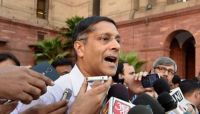
Last year, the economic survey surprisingly contained many new ideas and self criticisms that were unusual to surveys till then. Architect of the Survey, Economic Advisor – Arvind Subramanian in his preface to the edition has elaborated his approach and made it clear that he would not be passive. The survey has raised doubts about the d new methodology of GDP calculation as well.
But this year, things go beyond that and the second volume of economic survey 2016 contains 11 Chapters and most of them are critical of the country’s economy management. One fine example is the Chapter 2 titled ‘Chakravyuha Challenge of the Indian Economy’.
The chapter deals with India’s bankruptcy regime (exit) and argues why it is badly needed. Though the content of the chapter is about the lack of an exit policy (for companies to wind up their operations), several other related and unrelated weak aspects about the economy are stitched there and here by the writer.
At one point, the chapter calls the beuorocracy as a structural impediment to India’s progress.
Interestingly, the chapter is narrative and subjective in its tone that is not seen in an official document like an economic survey. The personalized opinion style of the writer is clearly visible though there are occasional quote and reference from existing studies and research.
Advocating the bankruptcy regime, the Chapter tells that if sick companies are not wind up, it may led to tax payers money lost and besides, the loss making company’s high priced product will be imposed on the consumers.
Then which are the one which need immediate treatment under bankruptcy code? There are occasional hints as well–it is the public sector that should be cleaned up first.
An unusually powerful criticism about the management of the economy comes when the Chapter describes that there are three ‘I’s that block the exit policy in India. These are interests, institutions and ideology.
According to the survey, in democracy, the producers enjoy disproportionate influence on the government. Understandably this leads to loss of welfare of consumers.
In another example, the survey illustrates how pressure groups destroyed a perfect running smart card system for MGNREGA workers in Andhra Pradesh.
On Institutions, the survey nearly declares Debt Recovery Tribunals as a waste arrangement. The inability to punish wilful defaulters is another weak institutional factor.
The Chapter is logically powerful in highlighting the need for reducing number of entities in many sectors – “there are not enough big firms and too many firms that are unable to grow.”
First table of the chapter gives an account of the loss making scenario. Comparing the losses of the government owned sectors, the table shows that largest loss making sector is DISCOMs where the losses are estimated to be RS 2.3 lakh crore. CPSEs, PSBs and civil aviation follow DISCOMs.
At the end of the chapter, public sector utilities of aviation and telecom are identified as loss making. Both air India and BSNL/MTL are making huge losses and that is well recognized by the survey.
About Air India and BSNL, the survey sounds that they were useful twenty years ago and now became a matter of loss of money to the exchequer and people.
Overall, the volume II is plain speaking of some weak elements in the economy management. Though not comprehensive, it is a welcome development from the writer- ex Peiterson Institute Arvind Subramanian.
*********











